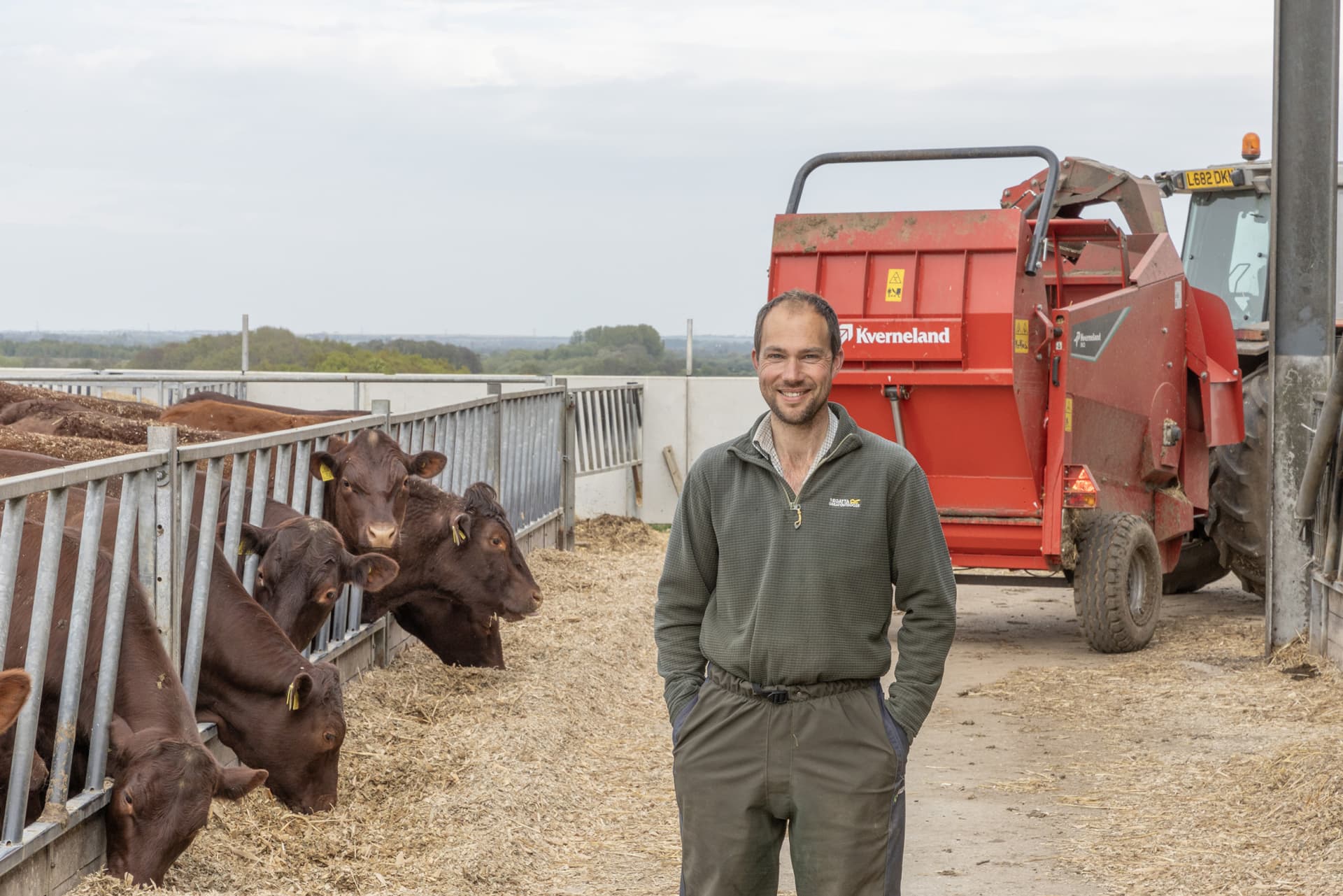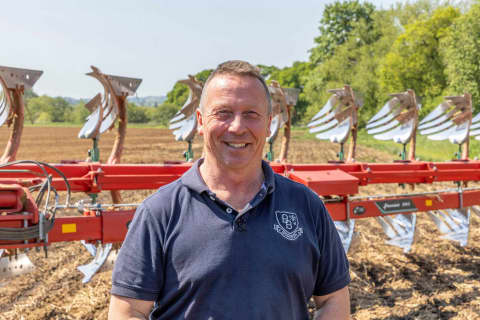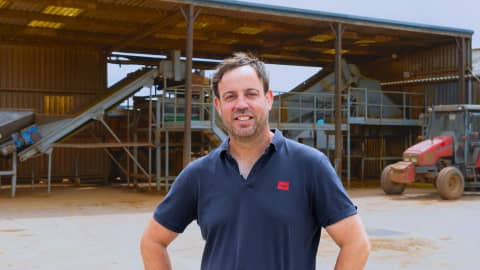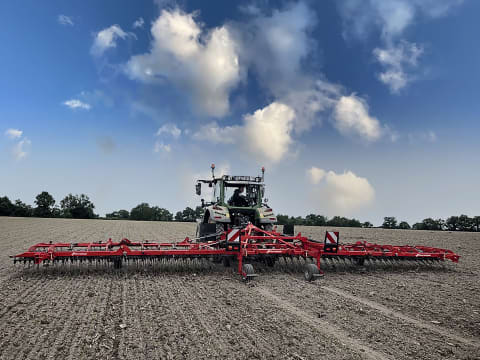“Before I got the Kverneland 863 Bale Chopper, I was using around 100 round bales of straw each week for our 200 pedigree Sussex cows and their followers,” explains Martin, pictured. “Now, consumption has dropped to around 60 bales.” That represents a 40% decrease in the number of bales used weekly, thanks to the Kverneland 863 Bale Chopper.
“The Kverneland 863 Bale Chopper processes bales far better than just unrolling them or letting the stock knock them around once the net is removed,” Martin says. “Blowing performance is great, and our muck is a much more consistent quality due to better straw distribution.”
Supplied by Lister Wilder, the trailed Kverneland 863 Multi-purpose Bale Chopper processes around 2,500 bales per year. While most are five-foot straw bales used for both feeding and bedding, a proportion of bales will also include four-foot round bales of hay.
“I can now feed the hay bales through the Kverneland 863 Bale Chopper,” he says. “The spout is very easy to control, as is the flow of material going through the machine. I can drop hay down the side of the Kverneland 863 Bale Chopper right against the feed barriers, and this leaves the material in a teased-out, fluffy row that is easy for the livestock to eat.”
Martin reckons the switch to a Kverneland Bale Feeder has made life much more efficient in many ways. “The benefits include much more than just better use of straw and hay,” he says. “It has made bedding a less frequent and much faster process, which also gives me time for other work.”
He mentions that while the rear door of the Kverneland Bale Chopper allows for self-loading, he prefers to use the farm’s telehandler and then use the rear door and its adjustable bale bar to simplify net removal.
“I’m really pleased with how it operates,” he says. “While you can add more blades to the rotor for a finer chop, the results I get are superb. It doesn’t smash the straw, and it continues to process poorer-quality, wetter bales into something that can be fully utilized.”




